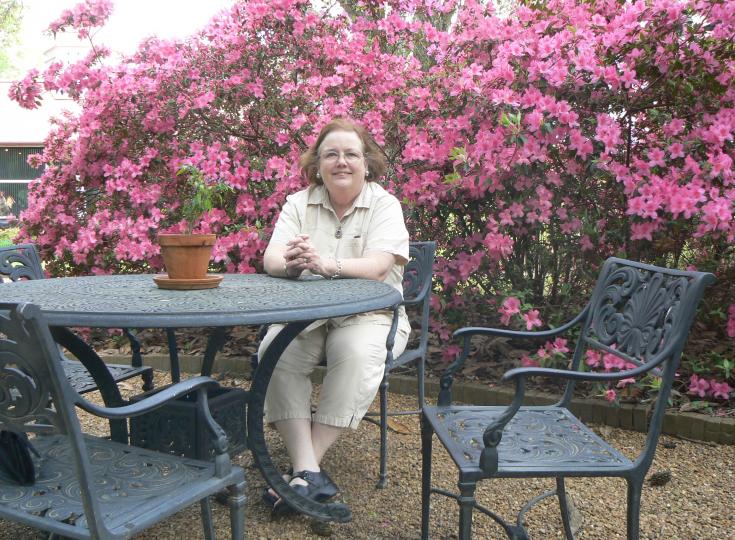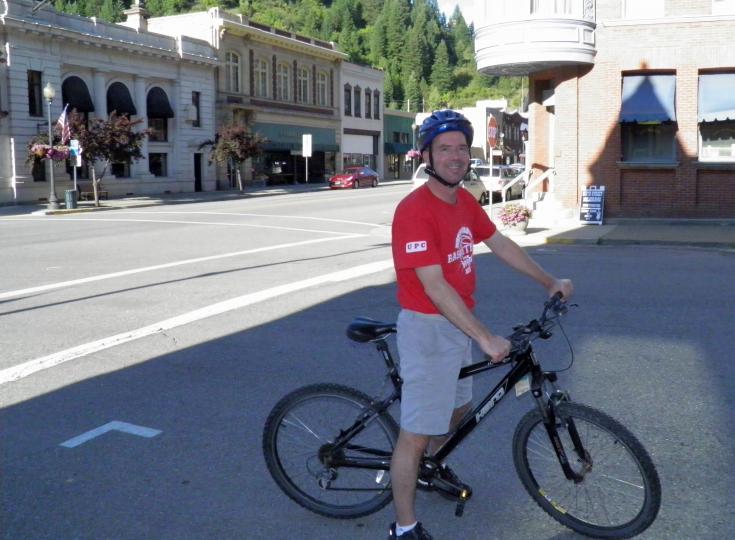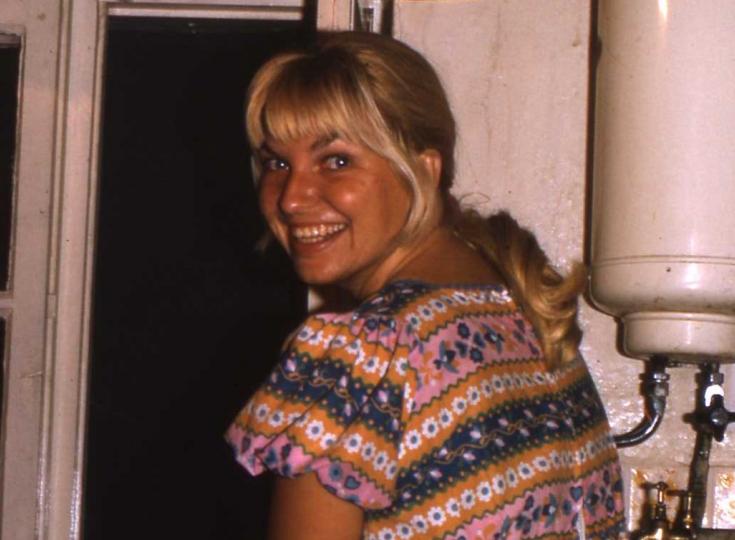Thomas McCoy - History from a Different Perspective

Thomas Allan McCoy is the author of the Western Historical Fiction series The McCoy’s: Before the Feud. As a direct descendant of the original McCoy family that was involved in the legendary feud between the Hatfields and McCoys, he provides a unique perspective and valuable insights regarding their traits, morals, and how family honor affected the way they carried out their lives after the Civil War. Inspired by the dramatic events that occurred within his own family history, McCoy weaves together facts and fiction to bring to life events that were happening in our country before this timeless feud from the 1860s took place. McCoy’s father, grandfather, great, and great, great grandfather were all born in Pikeville, Kentucky. However, he grew up in Southern California. In addition to writing, McCoy loves fishing, traveling, and baseball. As our Author of the Day, McCoy tells us more about the story behind the story of the feud.
Please give us a short introduction to what The McCoys Before The Feud is about
Most everyone has heard of the feud between the McCoy’s and the Hatfield’s from recent films or reading about the feud in history class in school; but have you ever heard of anyone writing about The McCoy’s: Before the Feud? Especially, being written by a true descendant of the original McCoy family that started the feud? That’s me! It’s time to give people something more than the feud to intrigue them.
I’ve written an interesting historical fiction novel, using some little known historical facts and my imagination about the McCoy family members during the period just after the Civil War, but before the feud began.
The Civil War had just ended, a group of McCoy’s unwilling to accept going home with just the clothes on their backs were fuming with anger over the atrocities wrought on the innocent southern people by the northern army’s raids on towns and citizens. These McCoy’s band together to take back the valuables stolen during the pillaging that was rampant along the Missouri-Kansas border during the war. There is a subplot of heart-warming romance between two of the main characters. Tommy McCoy is in love with Teresa, who he devastated emotionally, leaving her to go fight in the war and how they begin to recover the love they shared. With only a minimal amount of weapons and supplies they set out to take on the soldiers guarding these stockpiles. They would either become heroes to the southern people and their own families, or die trying.
Tell us more about Tommy McCoy. What makes him tick?
He is driven by his desire to right some of the wrongs done to the south and get his lady to love him again.
Do you think that it is sometimes important to view history from a different perspective? Why?
I think it’s always important to see or learn other possibilities that have the possibility to change what we thought or think about different periods in history. It opens up our minds to the knowledge of what really was happening and what could have happened that was never told.
Besides writing, what other secret skills do you have?
I studied Bus. Admin. At U.S.I.U. (United States International University) San Diego, CA, and also achieved an AA degree from MSAC (Mount San Antonio College) Walnut, CA.
I have participated in 13 seasons of professional baseball in Italy as a manager, coach and player respectively.
I worked as a sky television baseball game commentator in Italy for three years. Game of the week, play-offs, World Series.
The book's prologue starts of with pure action. Why did you take this approach?
Because I felt most people that like to read westerns want to have an idea of what action scenes are like in the book.
Readers say that the dialogue rings true. How did you pull this off?
I took it from how my family talked, those from Kentucky.
What was your greatest challenge when writing this book?
It was definitely introducing all the characters and still having a couple that were the main protagonists that would carry the story. Also trying to create the readers interest to pursue the story to the next book, where the characters become more personal and defined, showing more in depth the McCoy personality and traits.
How much research did you do for this book? What was the most interesting aspect of this research?
I went through many hours at the library and getting stories from my relatives on how the McCoys were as people toward neighbors and how they were towards family.
Here is some background info about the McCoys:
To help finance the high costs of the American Civil War, the Northern Army’s Generals and Government leaders had invoked a seize and sell order. Northern soldiers had begun staging raids against Southern family’s plantations, farms, and ranches. Four groups of soldiers raided for the North along the western Missouri and Kansas border counties, looting, pillaging, and murdering as they went. Some of the names of these raiding groups became infamous for their exploits and cruelty, which are well documented in America’s history. The groups known as the notorious Kansas Jayhawkers and the Red Legs, named for the fleecy red leggings they wore, were para-military bandits under the protection and direction of Brigadier General Thomas Ewing Jr., the commander of the district of the border between Kansas and Missouri, who was also in control of the bounty taken from the Southerners in this region.
The third group was called the Army of the North, was later legitimized by the Kansas territorial legislature, becoming known as the Territorial Militia.
The Fifth Missouri State Militia Cavalry formed the fourth group decimating the Southerners in Missouri and was based out of Independence, Missouri. The land along the Kansas-Missouri border in Cass, Bates, Vernon, Bourbon, and Barton counties became a wasteland of burnt homes and farms, spoiled fields and ruined ranches. The valuables taken from these areas and bounty taken from other areas where the war was being fought were brought to Independence, Kansas, to be auctioned off.
Of course, the leaders of these raiding groups weren’t about to miss the chance to make their own fortunes; each had his own personal cache of items hidden away. General Ewing, having conspired with the leaders of these groups to liberate the Northern army of a good portion of the valuables they were confiscating, knew the location of all the raiding groups and their leaders personal caches of valuables. Twenty-five percent of this personal bounty kept by the leaders was given to the general, who naturally had his own personal treasure hidden away; his huge stockpile of items selected from what came in from the groups of raiders in the other counties he commanded, plus what came in from other jurisdictions; it was rumored to be stashed in a large cavern in Douglas County, somewhere around Lawrence, Kansas.
By law, all of what was taken was supposed to be turned over to the government to pay for war expenses, but the goods that were put aside by the leaders under this general were, in effect, being stolen from the North by their own soldiers.
The southern people learned about these caches of valuables through word of mouth from farmers and families, who would hear about it when they went into the federal strongholds of Kansas City and Independence to purchase powder and pistol caps and conduct other personal business. These rumors came directly from the soldiers who served in these groups, boasting in the saloons, and to the girls they tried to impress with how much they’d taken from the people of the South.
A school teacher named William Quantrill, who once sided with the Lawrence, Kansas, crowd—the civic leaders and more prominent citizens who were anti-slavery—had many contacts in and around Lawrence and operated a network of spies—friends—all over Kansas. When the war first broke out, he helped to free slaves and gather plunder for the Lawrence crowd, but for his own reasons unknown, he switched to side with the South. He became the leader of the Missouri Guerrilla Raiders, which became known as Quantrill’s Raiders. It was one of the most notorious groups of raiders retaliating for the south, for the raids done by the Northern army to the southern people who still lived on their farms and ranches in what was considered a southern state.
Quantrill was asked by Missouri citizens to plan a revenge attack. An attack on a town that was not a military target to send a message to the north for all of the raiding being done on southern civillians.
On August 21, 1863, William Quantrill led a raid on Lawrence, Kansas, looting and burning the town down. The guerrillas subscribed to the Southern code: people and families not involved in the fighting were to be respected and left unharmed. After the raid on Lawrence, Quantrill learned through his spies much more about the valuables stolen along the Missouri-Kansas borders.
He also heard the rumors of where this bounty was being taken. Finally, he got exact locations and had his spies draw maps to show the coordinates of each cache in each county, and draw sketches of the actual compounds holding the bounty, including the huge cavern said to be full of millions of dollars’ worth of seized goods located close to Lawrence.
These sketched maps were put in a safe and buried under the Eldridge House, in Lawrence, Kansas; a wealthy family’s very large home turned into city hall after the family was killed. A man named Fletcher Taylor, special agent and spy for Quantrill, was dispatched by Quantrill to hide them there, thinking the safest place for them would be in the North’s own territory so that, just in case of Quantrill’s demise, the information and bounty could still be retrieved. About six months before the end of the war, word came that Quantrill had been killed. With Quantrill dead that meant Fletcher Taylor was now the only one who knew where the maps were.
Unfortunately, a few months before the end of the war, the maps came very close to being lost for good, when Fletcher Taylor was shot by a soldier in Lawrence. At the time, he was involved with a girl named Patricia, who was the sister of Teresa, the betrothed of Thomas McCoy, Jr., a Confederate soldier. While he was dying, Fletcher told Patricia of the caches of valuables in Missouri and the general’s big stash close by Lawrence, Kansas; he also revealed the location of the safe with the maps to find the millions stolen from the Missourians. Patricia immediately understood the implications of this and told her sister, nicknamed Terry, who sent word to her sweetheart Tommy, of the Second Kentucky Cavalry Regiment, about what Fletcher had told Patricia.
These events were taking place in 1865 along the western Missouri and eastern Kansas borders, specifically, the counties of Cass, Bates, Vernon, and Barton in Missouri, and Douglas and Bourbon counties in Kansas. The McCoy family name fought on both sides; approximately 2,821 McCoy soldiers fought in the Civil War for both the North and the South.
The stories of the raids being undertaken by the Jayhawkers, the Red Leggs, the Territorial Militia, and the Fifth Missouri State Militia Cavalry, along with the bounty of valuables being seized and stored in each county, had reached everyone—military and civilian. The McCoys began passing a message to their kinfolk asking them to find out as much as they could about the bounty taken during the looting and pillaging along the Missouri and Kansas border and, if possible, to find out where the North’s bounty caches were located. It was going to be a very risky endeavor: even if they succeeded in finding the caches. If they could accomplish this, the McCoys would be able to return some of the belongings to those who had been robbed and managed to survive the raids, while offering themselves a chance to rebuild their own lives as well. It would be one thing to take the stolen property and money back, but quite another to be able to keep it and spend it without being found out.
Do you consider yourself a disciplined writer? Do you have a schedule that you stick to, or is it more in the moment?
I try to write on the weekends when there is more tranquility at my house, but I write down ideas when they come to me and sometime have to write everything that comes to mind at the moment. I believe ideas come to you once very clear and flowing well. When you try to pick up the thought later after it came to you, you never quite get it the way it came to you the moment you got it in your head.
Do you have any interesting writing habits? What is an average writing day like for you?
I don’t have a regular schedule for my writing. I’m still trying to be a full time author. I have to fit my regular work schedule first then find time to write.
What are you working on right now?
I’m working on book 4 of the series. (The McCoys Before The Feud)
Where can our readers discover more of your work or interact with you?
They can find me on my author page on Amazon and my website themccoysbeforethefeud.com and also on my Facebook page The McCoys Before the Feud.





